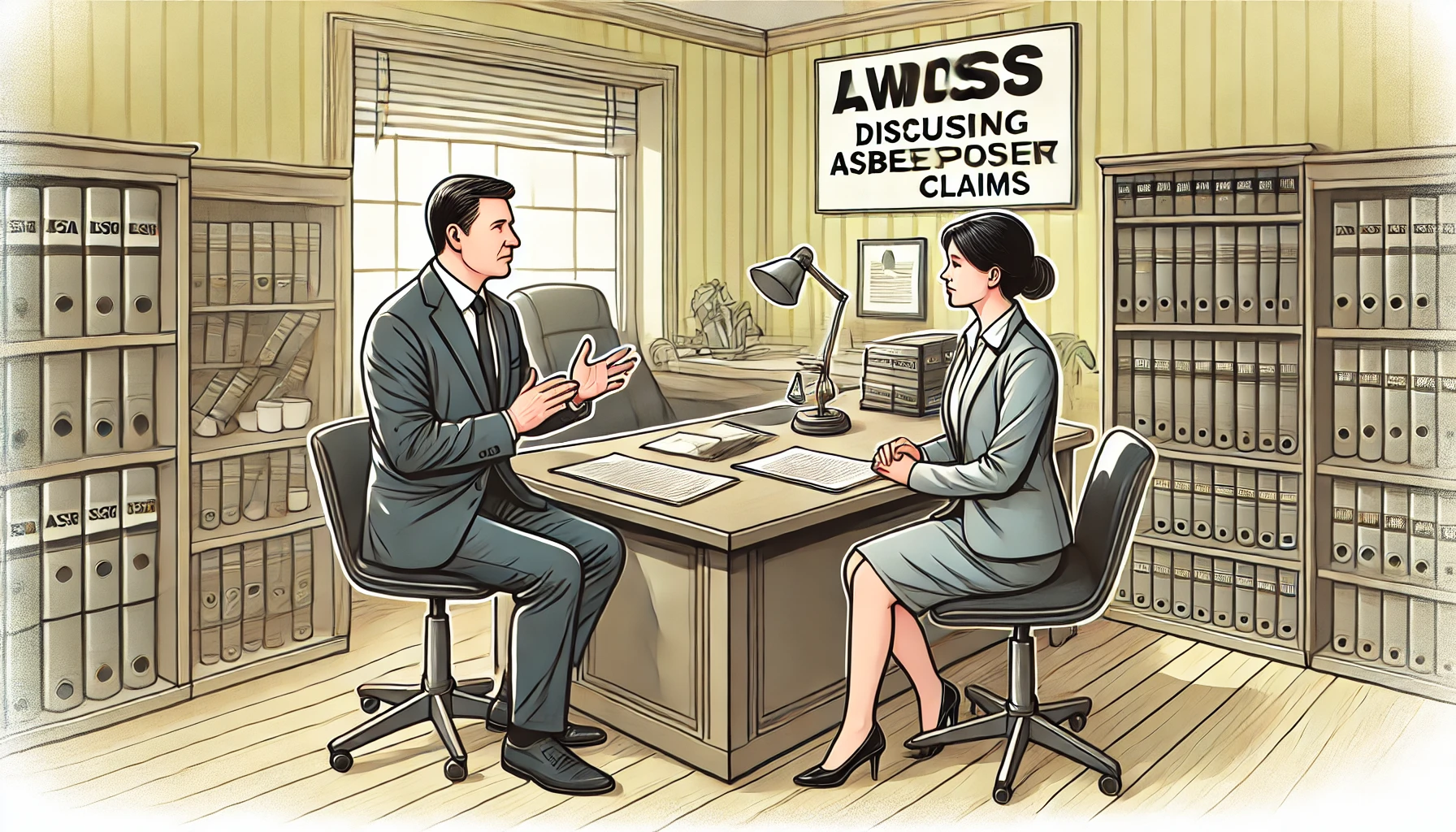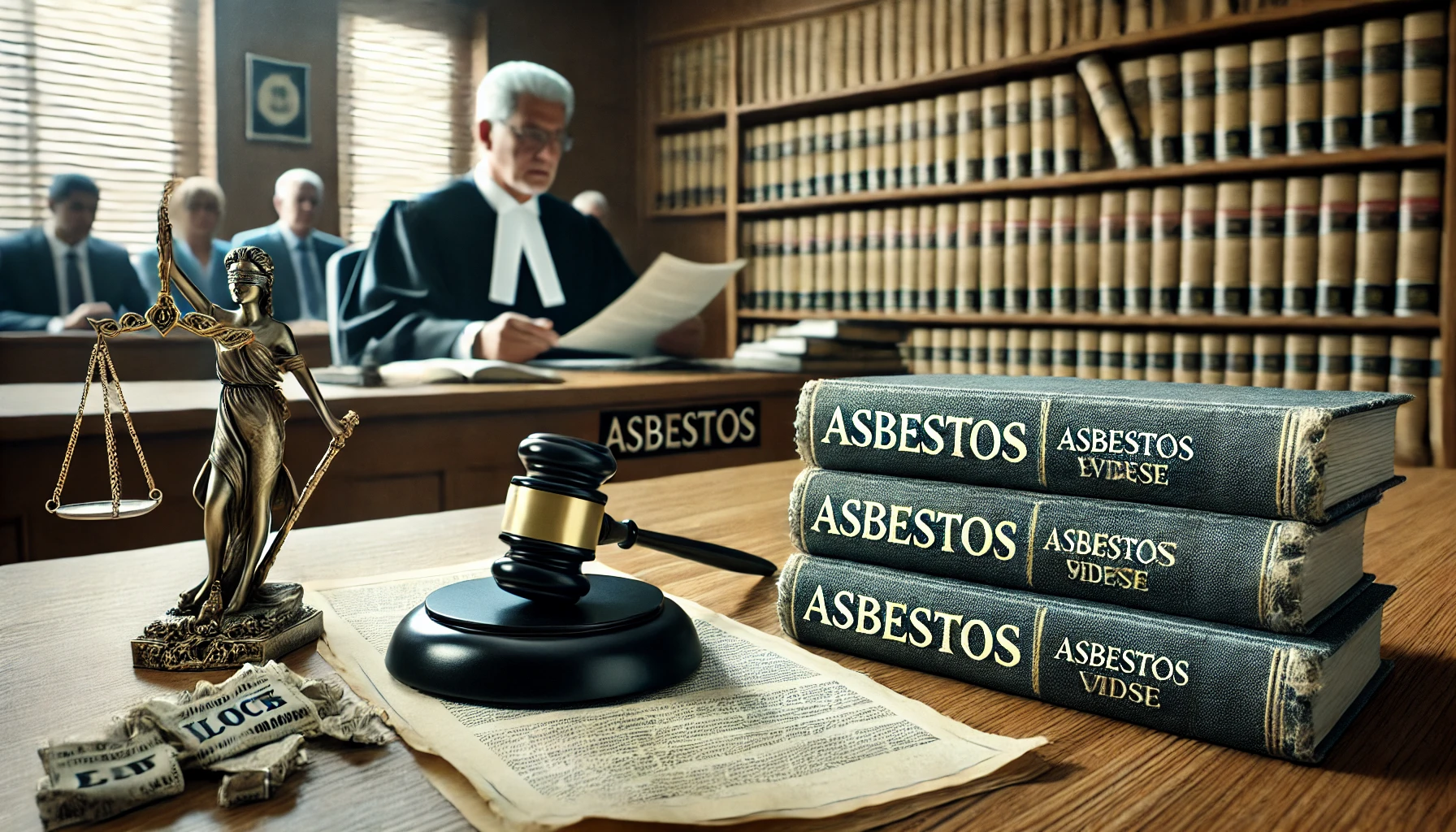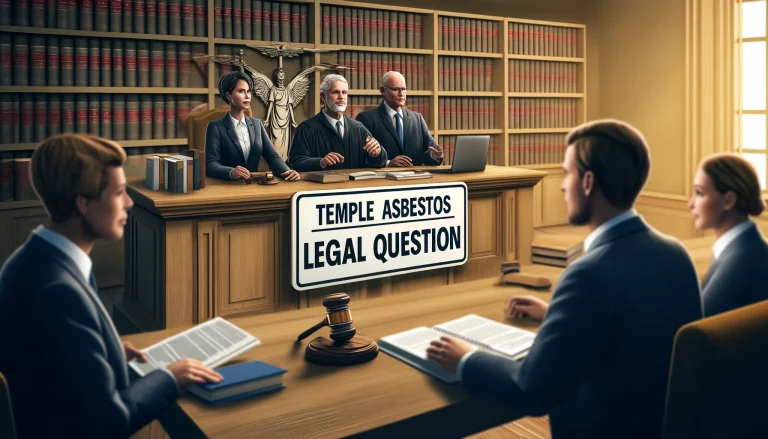Asbestos once hailed as a miracle material for its durability and heat resistance, has been widely used in industries and construction. Unfortunately, its fibers are highly toxic when inhaled, causing severe health conditions such as asbestosis, lung cancer, and mesothelioma. These diseases often take years or decades to develop, leaving exposed individuals with lingering fears about their future health.
This delay between exposure and illness has made asbestos litigation complex. Many lawsuits have sought compensation not only for diagnosed illnesses but also for emotional distress caused by the fear of potential future health issues. The Temple-Inland Forest Products Corp. v. Carter case, often referred to in discussions of the temple asbestos legal question, is a key example of how courts address such claims.
Background of the Temple Asbestos Legal Case
The Temple case arose in Texas, where employees of Temple-Inland Forest Products were exposed to asbestos during their work. While the workers had not developed any illnesses at the time of the lawsuit, they argued that their exposure created a reasonable fear of future disease, particularly given asbestos’s well-documented risks. They sought damages for the mental anguish caused by this fear.
The central legal question was whether mental anguish alone, without a diagnosed illness, was enough to justify compensation. This issue had significant implications for asbestos-related lawsuits nationwide.
The Legal Question: Mental Anguish Without Physical Illness
Mental anguish refers to emotional suffering or distress, which can include fear, anxiety, or depression. In asbestos cases, this often relates to the fear of developing severe, life-threatening illnesses like mesothelioma. However, legal systems typically require a clear connection between emotional distress and a physical injury.
The question in the Temple case was unique: Should the fear of a potential illness, even without current physical harm, be enough to warrant compensation? This posed challenges for the court, as emotional fears are harder to quantify and prove than physical injuries.
The Court’s Decision and Reasoning
The Texas Supreme Court ruled against the claimants, deciding that mental anguish damages could not be awarded based solely on asbestos exposure without any accompanying illness. The court provided several key reasons for this decision:
Physical Injury Requirement:
- Courts traditionally require proof of physical harm to validate emotional distress claims. In this case, no illnesses had been diagnosed, making the claims speculative.
Subjectivity of Fear:
- Fear of future illness is highly personal and varies widely among individuals. The court noted that such fears, while valid, are difficult to measure or standardize for legal purposes.
Protecting Legal Resources:
- Allowing claims based only on exposure could overwhelm the legal system with cases that may never result in actual harm. The court emphasized the need to focus on cases with tangible evidence.
Implications of the Ruling
The ruling had significant consequences for asbestos litigation and for both individuals and corporations:
Impact on Individuals:
- Claimants who have been exposed to asbestos now face stricter requirements for proving their cases. They must show actual physical harm, such as a diagnosed illness, to seek compensation for mental anguish.
- This decision encourages exposed individuals to monitor their health closely and seek early medical assessments.
Impact on Corporations:
- The ruling reduced liability for companies facing asbestos lawsuits. Without physical harm, claims based solely on exposure are less likely to succeed.
- However, corporations are still responsible for maintaining safe work environments to prevent exposure.
Legal Precedent:
- The Temple case set a precedent that influenced how similar claims are handled in courts across the U.S. It limited the scope of mental anguish claims, requiring concrete evidence of harm.
Debate and Criticism
The decision in the Temple case has sparked ongoing debate:
Support for the Decision:
- Many legal experts argue that the ruling ensures fairness by focusing on claims with tangible evidence.
- It prevents speculative lawsuits, which could lead to misuse of legal resources and potentially large settlements for unproven harms.
Criticism of the Decision:
- Opponents contend that the ruling fails to account for the real psychological impact of asbestos exposure. For many individuals, the fear of developing a deadly illness is a heavy burden.
- Critics argue that the decision may discourage individuals from seeking early legal recourse, even when they face significant risks.
Lessons Learned for Asbestos Litigation
The Temple case offers important lessons for individuals exposed to asbestos and for legal professionals:
For Individuals:
- It’s critical to monitor health closely after asbestos exposure. Regular medical check-ups can help identify issues early and strengthen potential legal claims.
- Keeping detailed records of medical history and exposure incidents can be vital in future lawsuits.
For Legal Professionals:
The case emphasizes the importance of presenting clear evidence. Lawyers handling asbestos claims must focus on documented physical harm or emotional distress directly linked to illness.
Broader Context: Asbestos and Public Health
Despite increased awareness and regulation, asbestos remains a public health issue. Many older buildings and industrial sites still contain asbestos, posing risks to workers and the public. Legal systems play a crucial role in holding companies accountable for negligence and ensuring that victims of exposure receive justice.
At the same time, rulings like the one in the Temple case highlight the importance of balancing the rights of claimants with the need for clear, evidence-based standards in court. This balance helps prevent misuse of the legal system while ensuring that genuine victims can seek compensation.
Conclusion
The Temple-Inland Forest Products Corp. v. Carter case stands as a landmark in asbestos litigation, addressing the pivotal temple asbestos legal question regarding the limits of mental anguish claims without physical illness. The ruling emphasizes the critical role of evidence in legal proceedings, prioritizing documented harm over speculative risks.
For individuals exposed to asbestos, this case underscores the importance of regular health monitoring and thorough legal preparation to strengthen potential claims. For legal systems, it highlights the ongoing challenge of balancing fairness for claimants with the need to prevent speculative lawsuits. Asbestos litigation continues to be a vital area of law, shaping how society navigates the long-term consequences of industrial negligence and ensuring justice for those affected.
FAQs About the Temple Asbestos Legal Question
What was the main issue in the Temple-Inland Forest Products Corp. v. Carter case?
The main issue was whether individuals exposed to asbestos but who had not yet developed an asbestos-related illness could claim damages for mental anguish caused by their fear of developing a future disease.
What did the court decide in the Temple case?
The Texas Supreme Court ruled that mental anguish damages could not be awarded solely based on asbestos exposure without a related physical illness. The court emphasized the need for concrete evidence of harm to support such claims.
Why is this case significant in asbestos litigation?
The case set a legal precedent by narrowing the scope of mental anguish claims. It clarified that courts require clear evidence of physical harm for emotional distress damages, influencing how future asbestos lawsuits are handled.
How does the ruling affect individuals exposed to asbestos?
Individuals must now demonstrate actual harm, such as a diagnosed illness, to claim damages for mental anguish. This encourages exposed individuals to monitor their health and document any potential asbestos-related conditions.
What are the broader implications of the Temple case?
The decision protects legal systems from speculative claims while encouraging safety measures in workplaces. However, it has also sparked debate about whether emotional harm caused by exposure alone should warrant compensation.





